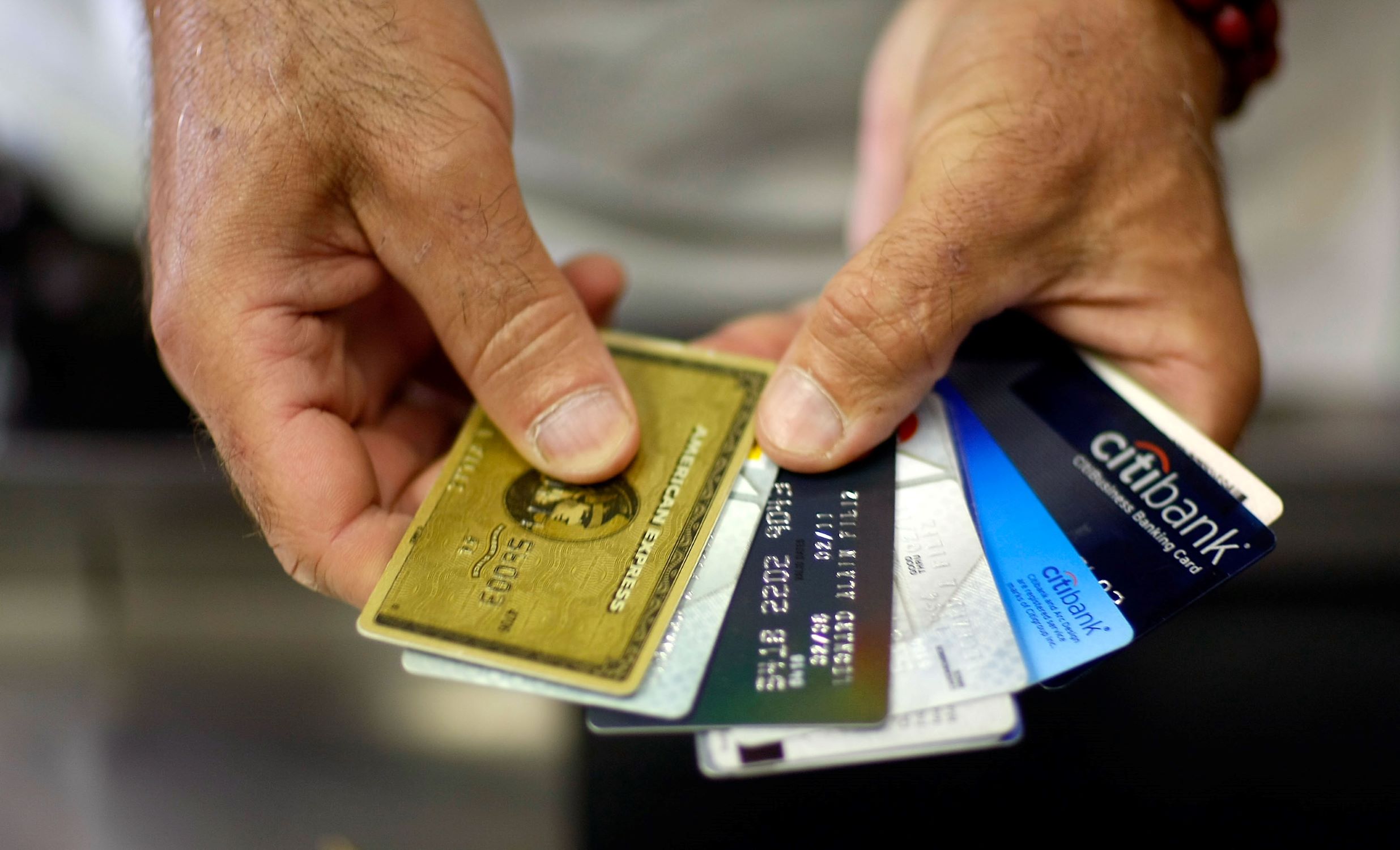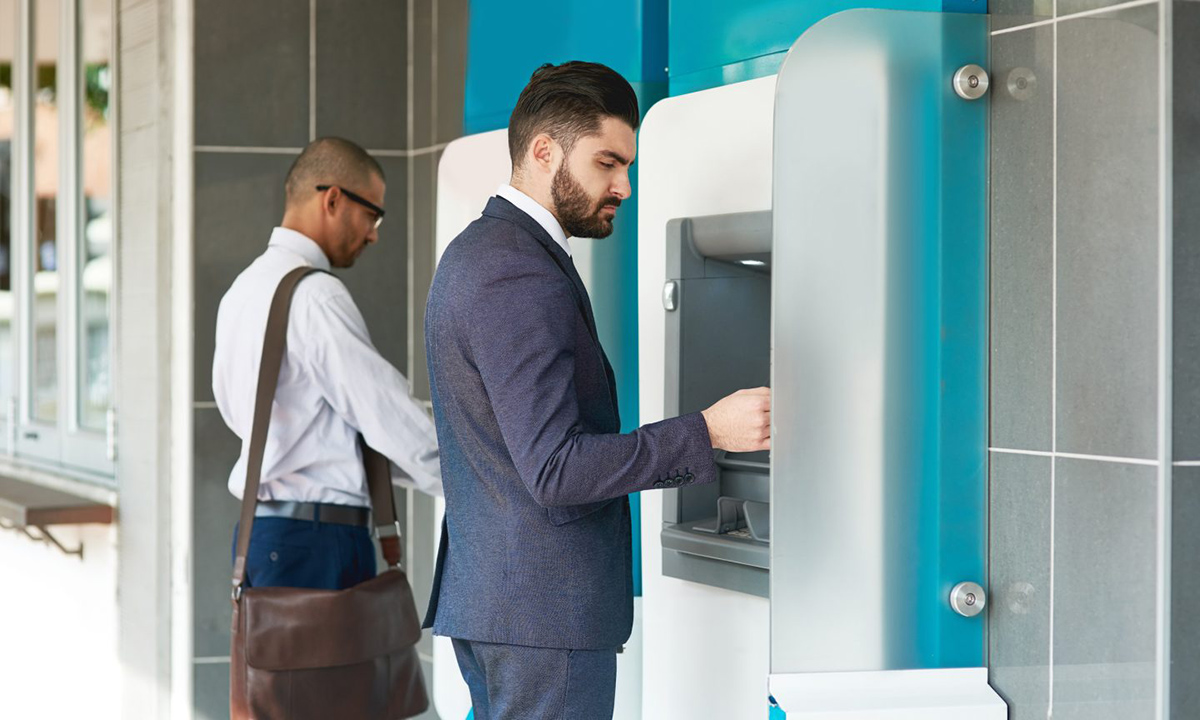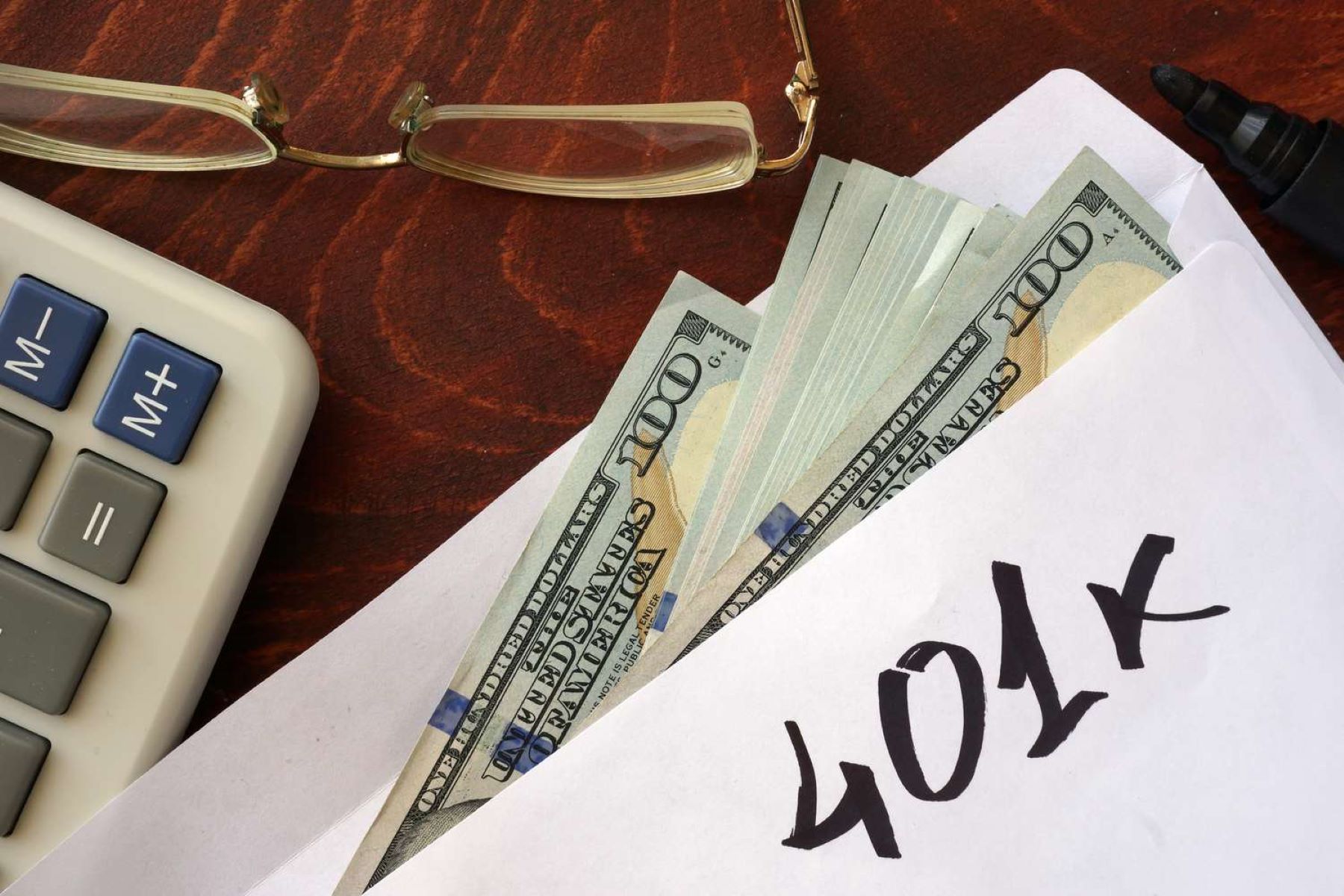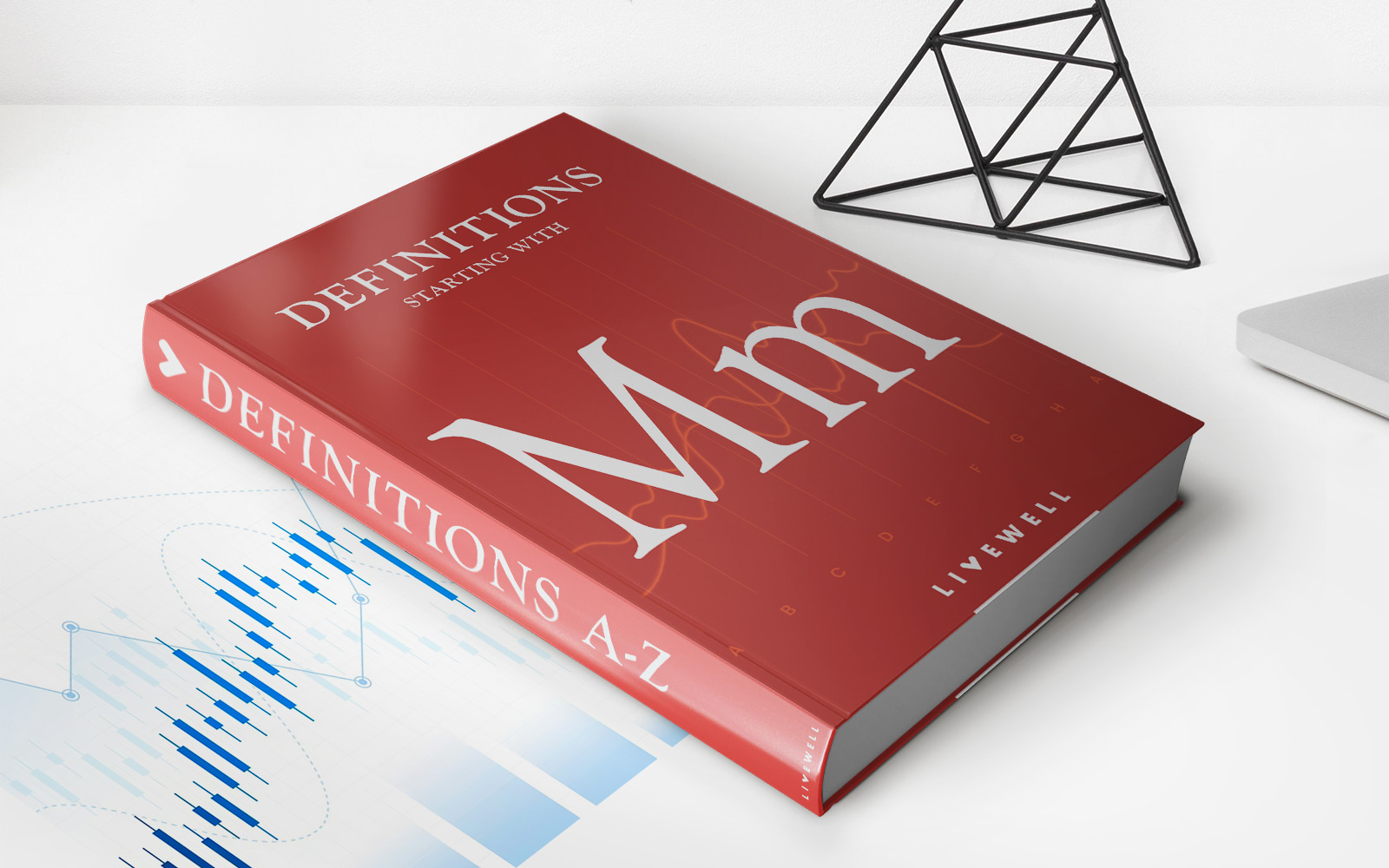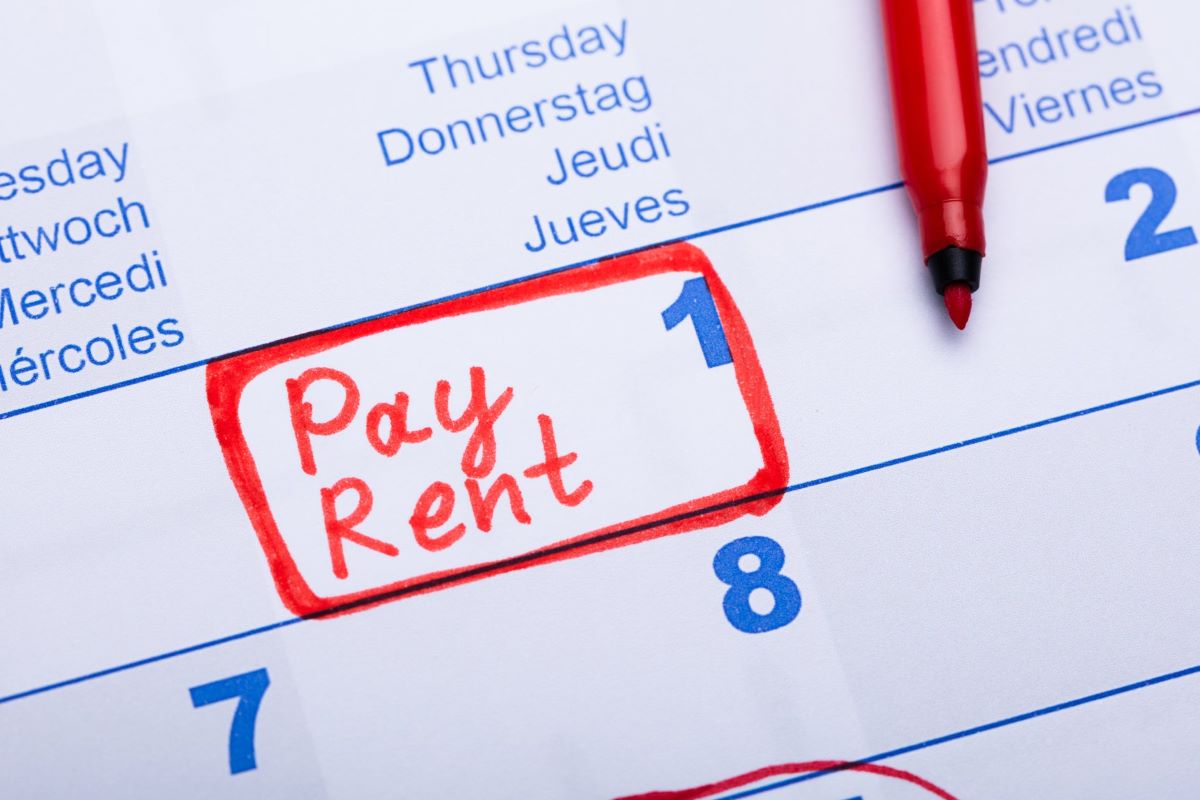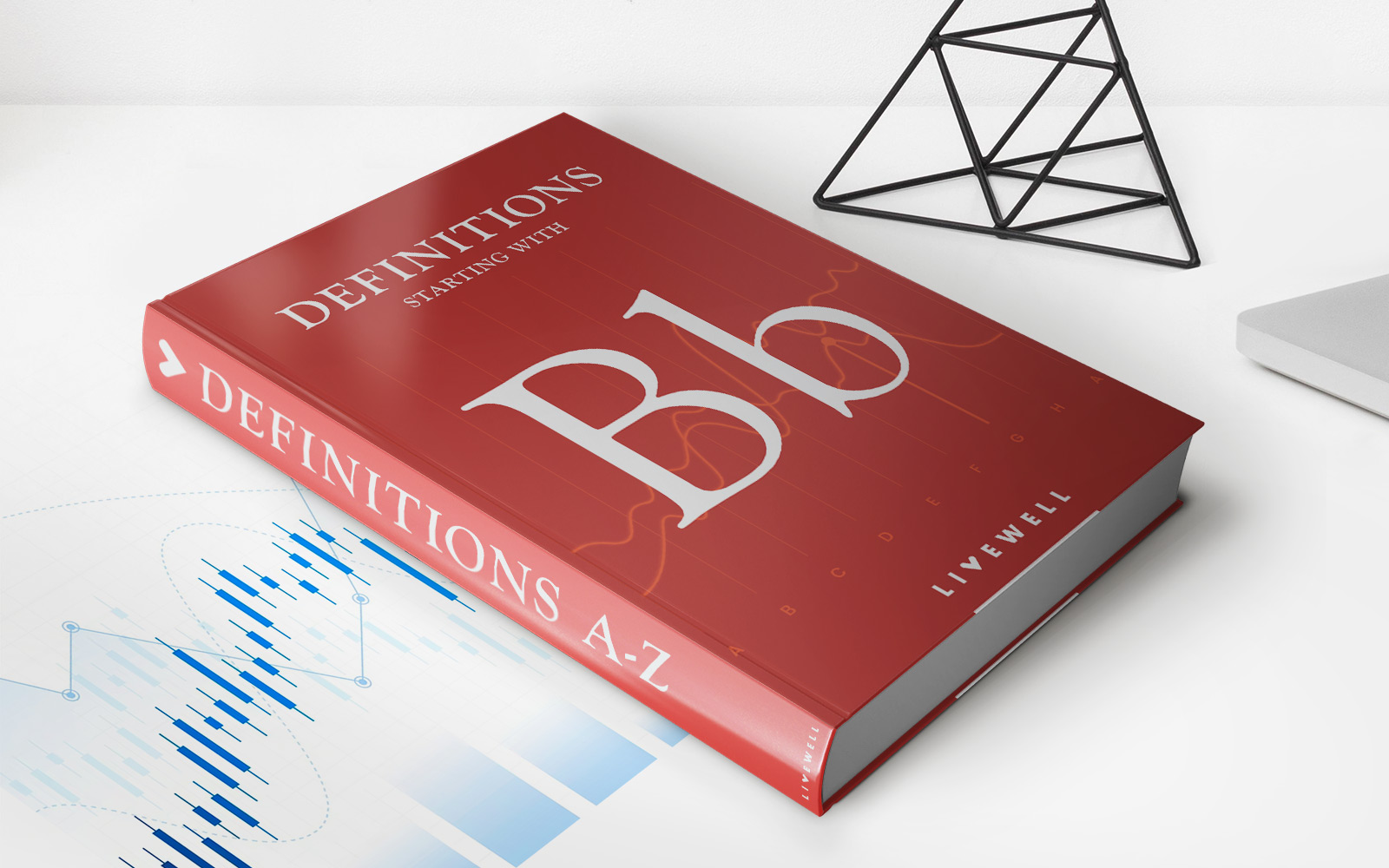

Finance
What To Do If You Max Out Your Credit Card
Published: October 27, 2023
Struggling with maxed-out credit cards? Find finance tips to tackle your debt and regain control of your financial situation.
(Many of the links in this article redirect to a specific reviewed product. Your purchase of these products through affiliate links helps to generate commission for LiveWell, at no extra cost. Learn more)
Table of Contents
Introduction
Using a credit card can be a convenient way to manage your expenses and build your credit history. However, it’s important to use credit responsibly and avoid accumulating high levels of debt. Sometimes, despite our best efforts, we may find ourselves in a situation where we max out our credit card.
Maxing out a credit card means reaching the limit set by the credit card issuer. This can happen for various reasons, such as unexpected expenses, a temporary financial setback, or overspending. When you max out your credit card, it’s crucial to take immediate action to rectify the situation and avoid further financial complications.
In this article, we will discuss what you should do if you find yourself in this situation and provide some practical steps to help you manage your credit card debt effectively.
Understanding credit card limits
Before we delve into the steps you should take, it’s essential to understand how credit card limits work. Every credit card comes with a predetermined credit limit, which is the maximum amount of money you can charge to that card. Exceeding this limit can result in costly fees, decreased credit scores, and possible restrictions on your credit card usage.
It’s important to keep in mind that your credit limit is not a spending target. Instead, it should be seen as a safety net that allows you to make necessary purchases and manage unforeseen expenses. By keeping your credit card balance well below the limit, you can avoid making financial decisions that could negatively impact your credit history.
Assessing your financial situation
When you max out your credit card, it serves as a wake-up call to reassess your financial situation. Take a moment to analyze your income, expenses, and overall debt. This evaluation will help you gain a clear understanding of your financial standing and identify areas where you can make adjustments to improve your situation.
Consider creating a budget to track your income and expenses. This will enable you to identify areas where you can cut back on spending and allocate extra funds towards paying off your credit card debt. Additionally, review your other outstanding debts and prioritize them based on interest rates and payment terms.
Understanding credit card limits
When it comes to credit cards, understanding your credit limit is of utmost importance. Your credit limit is the maximum amount of money that you can borrow from your credit card issuer. It acts as a boundary that determines how much you can charge on your card. If you exceed this limit, you are considered to have “maxed out” your credit card. This can have negative consequences for your credit score and financial well-being.
Credit card limits are determined by the card issuer based on a variety of factors, such as your credit history, income, and creditworthiness. The limit is usually set when you first receive the card, but it may be adjusted over time based on your usage and payment history. It’s important to note that different cards have different credit limits, so it’s crucial to be aware of the specific limit on each of your cards.
Exceeding your credit card limit can result in various consequences. First, many credit card issuers charge an over-limit fee if you go beyond your limit. This fee can range from a set amount to a percentage of the over-limit amount. These fees can add up quickly and further increase your debt burden.
In addition to the fees, maxing out your credit card can also have a negative impact on your credit score. Credit utilization ratio, which is the percentage of your available credit that you are using, is an important factor in determining your credit score. If you max out your credit card, your credit utilization ratio will be high, signaling to lenders that you may be stretching your finances too thin. This can make it harder to secure loans or credit in the future.
It’s important to note that credit card limits are not meant to be reached or exceeded. They serve as a guideline for responsible credit card usage. Ideally, you should aim to keep your credit card balance well below your limit. This demonstrates to lenders that you are using credit responsibly and can manage your finances effectively.
If you find yourself consistently reaching or exceeding your credit card limit, it may be a sign that you need to reassess your financial habits and make some changes. Understanding your credit limit and using it wisely is an integral part of maintaining good financial health and avoiding unnecessary debt.
Assessing your financial situation
When you find yourself in a situation where you have maxed out your credit card, it is essential to assess your overall financial situation. This assessment will help you gain a clear understanding of your income, expenses, and debts, allowing you to make informed decisions about how to tackle your credit card debt.
Start by reviewing your income sources and any fixed expenses you have, such as rent or mortgage payments, utility bills, and insurance premiums. Calculate your monthly income and subtract your fixed expenses to determine how much disposable income you have left.
Next, analyze your discretionary expenses, such as dining out, entertainment, and shopping. These are the areas where you can potentially make cuts to free up more funds to pay off your credit card debt. Consider creating a budget to track your expenses and identify areas where you can make adjustments.
Once you have a clear picture of your income and expenses, take a look at your debts. In addition to your maxed-out credit card, consider any other outstanding debts you may have, such as student loans, car loans, or personal loans. Make a list of your debts, including the outstanding balance, interest rates, and minimum monthly payments.
By understanding your financial situation, you can prioritize your debts and develop a strategy for paying them off effectively. While it’s important to make at least the minimum payments on all your debts to avoid penalties, consider focusing on paying off the debt with the highest interest rate first. This approach will save you money on interest payments in the long run.
Assessing your financial situation also involves evaluating any financial assets or savings you have. Consider whether you can allocate any of these funds towards paying off your credit card debt. While it’s important to have savings for emergencies, using a portion of it to reduce your debt burden can be a wise financial move.
Remember, assessing your financial situation is a crucial step in understanding the extent of your credit card debt and developing a plan to pay it off. By gaining a clear understanding of your income, expenses, and debts, you can make informed decisions and take the necessary actions to regain control of your finances.
Contacting your credit card issuer
When you’ve maxed out your credit card, one of the first steps you should take is to contact your credit card issuer. It’s important to communicate with them about your situation and explore any options that may be available to help you manage your debt.
Start by locating the customer service contact information for your credit card issuer. This can usually be found on the back of your credit card or on your monthly billing statement. Call the customer service hotline or use the online chat feature, if available, to initiate contact with the issuer.
When speaking with the customer service representative or contacting them through written communication, explain your situation honestly and clearly. Inform them that you have maxed out your credit card and are seeking assistance to repay your debt. The representative may ask for additional information to better understand your financial situation.
During this conversation, you can inquire about potential options that the credit card issuer may offer. Some issuers may have hardship programs or repayment plans that can provide you with some relief. These programs may include reduced interest rates, lower monthly payments, or other arrangements that can help you manage your debt more effectively.
Additionally, ask the customer service representative about any possible fees or penalties associated with maxing out your credit card. They can explain how these fees work and provide guidance on how to avoid incurring additional charges.
It’s important to note that not all credit card issuers offer the same options or assistance programs. Some may have more flexible policies, while others may be more stringent. Regardless, it’s still worth contacting your credit card issuer to explore any potential solutions or assistance that may be available to you.
Remember to keep the lines of communication open with your credit card issuer throughout the process. If you experience any challenges or unforeseen circumstances, reaching out to them promptly can help you find a resolution and prevent further financial complications.
Contacting your credit card issuer is an important step in managing your maxed-out credit card debt. By initiating communication and exploring potential options, you can work towards finding a solution that fits your financial needs and helps you regain control of your debt.
Negotiating with your credit card issuer
Once you’ve contacted your credit card issuer and explained your situation, it’s time to explore the possibility of negotiating with them to find a mutually beneficial solution. Negotiating with your credit card issuer can help you find relief from high interest rates or fees and create a repayment plan that is more manageable for your financial situation.
Here are some steps to consider when negotiating with your credit card issuer:
1. Stay calm and focused: Approach the negotiation process with a calm and focused mindset. Remember to remain respectful and polite throughout the conversation, as this will increase your chances of a positive outcome.
2. Express your financial hardship: Clearly communicate the reasons for your maxed-out credit card and any financial difficulties you are currently experiencing. This will help the issuer understand your situation and potentially offer assistance.
3. Request a lower interest rate: High interest rates can make it challenging to pay off your credit card debt. Ask your credit card issuer if they can lower the interest rate temporarily or permanently, as a lower rate can significantly reduce the total amount you’ll pay over time.
4. Negotiate a repayment plan: Work with your credit card issuer to establish a repayment plan that is feasible for your budget. This may involve reducing or waiving late fees, extending the payment period, or setting up a more flexible payment schedule.
5. Explore debt settlement options: If you’re struggling to pay off your debt, you may consider negotiating a settlement with your credit card issuer. A settlement involves agreeing to pay less than the total amount owed, and it can help you resolve the debt faster. Be aware that settling the debt may have negative effects on your credit report.
6. Document all agreements: During the negotiation process, make sure to document all agreements in writing. This includes any changes to interest rates, repayment plans, or settlement offers. Having written documentation will help protect you from any misunderstandings or disputes in the future.
7. Follow up regularly: Keep in touch with your credit card issuer regularly to ensure that all agreed-upon changes are implemented correctly. If any issues arise, address them promptly and maintain open communication throughout the repayment process.
Remember, not all negotiation attempts will be successful, and the outcome depends on your specific circumstances and your credit card issuer’s policies. However, by being proactive and making your case, you increase the likelihood of finding a solution that works for both parties.
Always approach negotiations with a willingness to compromise and be flexible. Finding common ground with your credit card issuer can lead to a more manageable repayment plan and help you regain control of your finances.
Exploring balance transfer options
If you’ve maxed out your credit card and are struggling with high interest rates, exploring balance transfer options can be a smart move to alleviate your financial burden. A balance transfer involves moving your credit card debt from one card to another, typically with a lower interest rate or promotional offer. This can help you save on interest charges and accelerate your debt repayment efforts.
Here are some key considerations when exploring balance transfer options:
1. Review balance transfer offers: Research different credit card companies and financial institutions to find balance transfer offers that best suit your needs. Look for cards with low or zero introductory interest rates on balance transfers and a reasonable ongoing interest rate after the promotional period ends.
2. Understand the terms and fees: Pay attention to the terms and conditions associated with balance transfers. They often include a fee for transferring the balance, usually a percentage of the amount transferred. Make sure to factor in this fee when evaluating the overall cost savings of the balance transfer.
3. Calculate savings: Use online calculators or spreadsheets to determine how much you can potentially save by transferring your balance to a card with a lower interest rate. Consider the difference in monthly payments and the time it will take to pay off your debt based on the new interest rate.
4. Apply for the new card: Once you’ve identified a suitable balance transfer offer, complete the application process for the new credit card. Be prepared to provide information about your current debt balance and the credit card account you wish to transfer from.
5. Transfer the balance: After receiving approval for the new card, contact the credit card company to initiate the balance transfer. They will guide you through the process, which may involve providing the account information of your current credit card and specifying the amount you wish to transfer.
6. Pay off the debt: Take advantage of the lower interest rate or promotional period to aggressively pay down your credit card debt. Make timely monthly payments and avoid adding new charges to the card, as this can undo the progress you’ve made.
7. Monitor the new card: Keep a close eye on the balance transfer card and its terms during the introductory period. Confirm that the balance was transferred correctly and ensure you understand when the promotional rate ends and what the ongoing interest rate will be.
Balance transfers can be an effective strategy to save on interest and pay off your credit card debt faster. However, it’s important to read and understand the terms and conditions of the new card and maintain responsible credit card usage to avoid falling into the same debt trap.
Note that balance transfers may not be suitable for everyone. Some individuals may not qualify for balance transfer offers, or the potential savings might not outweigh the associated fees and requirements. As such, it’s essential to carefully evaluate your unique circumstances and speak with a financial advisor if necessary.
Creating a repayment plan
When you have maxed out your credit card, developing a thoughtful and structured repayment plan is crucial to getting your finances back on track. A well-designed repayment plan will help you systematically pay off your credit card debt and achieve your financial goals. Here are some steps to create an effective repayment plan:
1. Assess your current debt: Start by gathering all the necessary information about your credit card debt. Note down the outstanding balance, interest rate, and minimum monthly payment for each card. This will give you a clear overview of the total amount you owe and the varying interest rates you are dealing with.
2. Prioritize your debts: Determine which credit card debt to prioritize based on factors such as interest rates, repayment terms, and any outstanding fees. It’s generally recommended to focus on high-interest debts first, as they can accumulate quickly and become costly in the long run.
3. Set achievable goals: Establish specific, measurable, and realistic goals for paying off your credit card debt. Consider setting goals for the amount you want to pay off each month or the date by which you aim to be debt-free. These goals will provide you with a roadmap and keep you motivated throughout the repayment process.
4. Create a budget: Develop a detailed budget that outlines your income, fixed expenses, and discretionary spending. Analyze your expenses and identify areas where you can reduce spending to free up extra funds for debt repayment. Allocate as much money as possible towards paying off your credit card debt while maintaining the minimum payments on your other debts.
5. Consider debt consolidation: If you have multiple credit card debts, you may want to explore debt consolidation options. Debt consolidation involves taking out a new loan, such as a personal loan, to pay off multiple debts. This can simplify your repayment process by combining your debts into a single monthly payment with a potentially lower interest rate.
6. Make consistent payments: Commit to making consistent and timely payments towards your credit card debt. Consider setting up automatic payments to ensure you don’t miss any payments and incur late fees. Additionally, try to pay more than the minimum payment each month to reduce your overall interest charges and pay off the debt more quickly.
7. Track your progress: Regularly monitor your progress and celebrate milestones along the way. Use a spreadsheet or debt repayment app to track your payments and see how your debt decreases over time. This visual representation of progress can be motivating and give you a sense of accomplishment as you move closer to becoming debt-free.
8. Adjust as needed: Review your repayment plan periodically and make adjustments as necessary. If you experience changes in your income, expenses, or financial goals, adapt your plan to accommodate these shifts. Flexibility is key in ensuring your repayment plan remains effective and achievable.
A well-defined repayment plan is a powerful tool in regaining control of your financial situation. By implementing these steps and staying committed to your plan, you will be on the path to becoming debt-free and achieving greater financial stability.
Seeking professional help
If you’re struggling to manage your maxed-out credit card debt on your own, seeking professional help can provide valuable support and guidance. Financial professionals can offer expert advice and assistance to help you navigate your debt and develop a more effective plan for repayment. Here are some options to consider:
Credit counseling: Credit counseling agencies provide free or low-cost services to help individuals manage their debt. A credit counselor will review your financial situation, help you create a budget, and provide guidance on repaying your debts. They can also negotiate on your behalf with creditors to lower interest rates and create manageable payment plans.
Debt settlement: If your debt situation is severe and you’re unable to meet your minimum monthly payments, debt settlement may be an option. In this process, a debt settlement company negotiates with your creditors to settle your debts for a lower amount. However, it’s important to be aware that debt settlement can have a negative impact on your credit score and may come with tax consequences.
Debt consolidation: Debt consolidation involves combining multiple debts into a single loan with a lower interest rate. This simplifies your repayment process and can potentially reduce the overall interest you pay. Consider reaching out to a financial institution or loan provider to explore your options for debt consolidation.
Bankruptcy: If you’re overwhelmed by debt and unable to find a feasible solution, bankruptcy may be a last resort. Consult with a bankruptcy attorney to understand the implications and processes involved in filing for bankruptcy. Bankruptcy should only be considered after exploring all other options, as it has long-term consequences on your credit and financial future.
Seeking professional help can provide you with the knowledge and support needed to make informed decisions and overcome your credit card debt challenges. These professionals have experience working with individuals in similar situations and can offer personalized advice based on your specific circumstances.
Remember, it’s crucial to research and choose reputable professionals or agencies. Look for organizations that are accredited by reputable industry associations, such as the National Foundation for Credit Counseling (NFCC) or the Financial Counseling Association of America (FCAA).
Taking the step to seek professional help is an important investment in your financial future. By accessing the expertise and guidance of professionals, you can gain the tools and strategies needed to effectively manage your debt and work towards a more secure financial position.
Avoiding future credit card debt
Once you’ve successfully managed and paid off your maxed-out credit card debt, it’s important to develop healthy financial habits and strategies to avoid falling into the same debt trap in the future. Here are some key steps you can take to stay on track and maintain a responsible approach to credit card usage:
Create a budget and stick to it: Establish a realistic budget that aligns with your income and expenses. Track your spending, prioritize your financial goals, and allocate a portion of your income towards savings and debt repayment. Being mindful of your spending habits will help you avoid overspending and accumulating unnecessary credit card debt.
Pay your credit card balance in full: Aim to pay off your credit card balance in full each month to avoid carrying a balance and accumulating interest charges. By paying in full, you prevent the debt from piling up and ensure that you’re using credit responsibly.
Use credit cards wisely: Limit your credit card usage to necessary expenses and emergencies. Avoid using credit cards for impulse purchases or non-essential items. Consider using cash or a debit card for everyday expenses to keep your credit card balances in check.
Monitor your credit card statements: Regularly review your credit card statements to detect any unfamiliar or unauthorized charges. By staying vigilant, you can identify and report any potential fraudulent activity in a timely manner, protecting yourself from unnecessary debt and identity theft.
Build an emergency fund: Establish an emergency fund to cover unexpected expenses and reduce the need to rely on credit cards in times of financial stress. Aim to save three to six months’ worth of living expenses in a separate account that is easily accessible in case of emergencies.
Avoid unnecessary credit card applications: Limit the number of credit cards you apply for to prevent the temptation of overspending or getting into more debt. Each new credit card application can result in a hard inquiry on your credit report, which can temporarily lower your credit score.
Regularly review and understand credit card terms: Familiarize yourself with the terms and conditions of your credit cards, including interest rates, fees, and grace periods. This knowledge will help you make informed decisions and avoid any surprises that can lead to debt accumulation.
Seek financial guidance if needed: If you find yourself struggling to manage your finances or maintain responsible credit card usage, don’t hesitate to seek professional financial advice. Financial advisors can provide personalized guidance and strategies to help you stay on a healthy financial path.
By implementing these strategies and adopting responsible financial habits, you can avoid future credit card debt and maintain a strong financial foundation. Regularly assess your progress, adjust your strategies when needed, and stay disciplined to achieve long-term financial success.
Conclusion
Maxing out a credit card can cause financial stress and have long-lasting repercussions on your credit score and overall financial well-being. However, it’s important to remember that there are steps you can take to mitigate the impact and regain control of your finances.
In this article, we discussed various strategies for handling and recovering from maxed-out credit card debt. We emphasized the importance of understanding credit card limits, assessing your financial situation, and contacting your credit card issuer to explore potential options. We also encouraged you to negotiate with your credit card issuer, explore balance transfer options, create a repayment plan, seek professional help if needed, and take steps to avoid future credit card debt.
Remember, managing credit card debt is an ongoing process that requires discipline, determination, and financial literacy. It’s important to remain proactive, stay informed about your financial situation, and make responsible financial decisions. By implementing the strategies outlined in this article, you can work towards paying off your credit card debt, improving your credit score, and building a solid foundation for a healthier and more secure financial future.
If you’re feeling overwhelmed or struggling to manage your credit card debt, don’t hesitate to reach out for assistance. Financial professionals and credit counseling agencies are available to provide guidance and support tailored to your unique circumstances.
With commitment and perseverance, you can overcome the challenges of maxed-out credit card debt and pave the way to a more stable and prosperous financial future.
